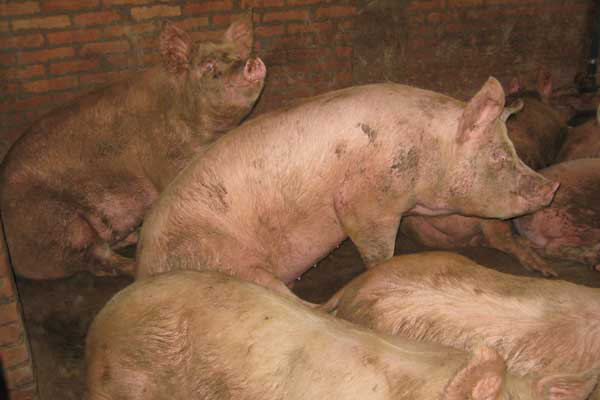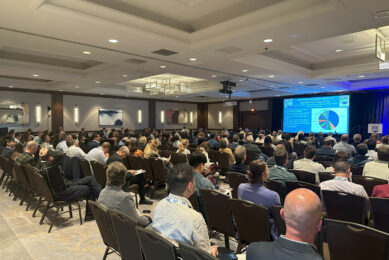Liquid-fed heavy pigs can manage without added water

Removing nipple drinkers does not to affect growth parameters in heavy finishers, when fed on liquid feeding, Italian researchers have observed.
Researchers from the University of Bologna and the University of Teramo set up a trial to figure out if the absence of additional drinking water could compromise the production traits or behaviour of liquid-fed heavy pigs, e.g. for Parma ham production.
The scientists set up this trial as reducing water waste, and therefore the total volume of manure produced, is one of the ways to lower the environmental impact of intensive pig farming.
In total, 60 animals with an initial bodyweight of 78 kg were divided into two experimental groups, both fed a liquid diet (water-to-feed ratio 3:1 w/w).
All pens were equipped with nipple drinkers; one of the groups had permanent access to fresh water (working drinkers), whereas the other group had no water supply except that delivered with food (dry drinkers).
The pigs were housed in temperature- and humidity-controlled rooms. They were brought to a weight of 160 kg and then slaughtered. Hams were dry-cured according to the directives for Parma ham production.
No significant differences were observed between the experimental groups with respect to growth parameters (ADG and FCR), behavioural traits, blood parameters or the qualitative traits of carcasses (dressing out, lean meat yield, backfat thickness), meat (pH, colour, WHC, fatty acid composition of subcutaneous fat and tenderness) and cured hams (weight losses, sensory properties, chemical composition and oxidative status).
With respect to drinking behaviour, a low number of visits to the drinker were recorded for both groups and data seem to indicate a high amount of water wasted by pigs provided with additional water delivery by nipple drinkers.
Liquid feeding did not suppress drinkers use or drinker manipulation in both groups.
The research appeared in Livestock Science.











